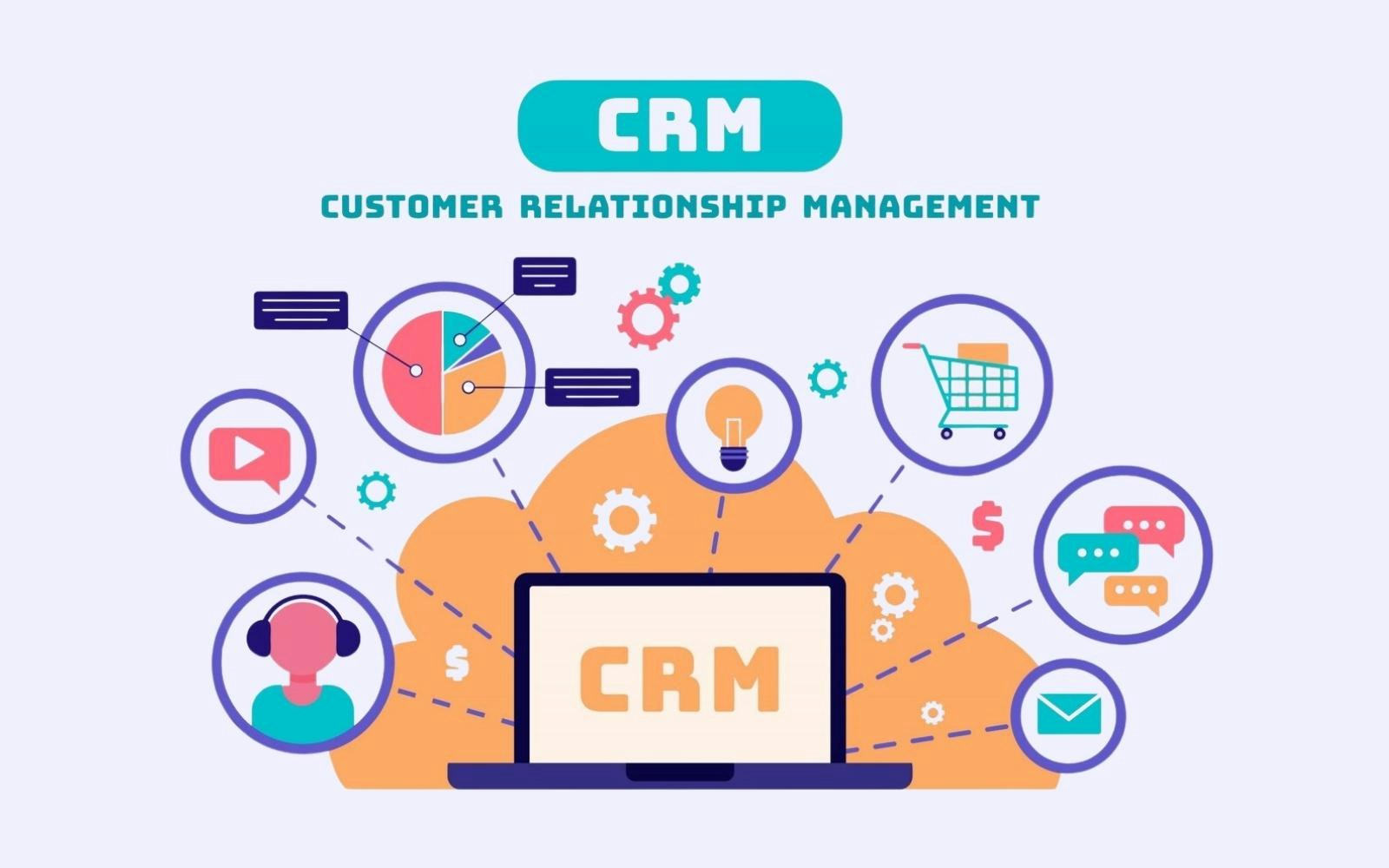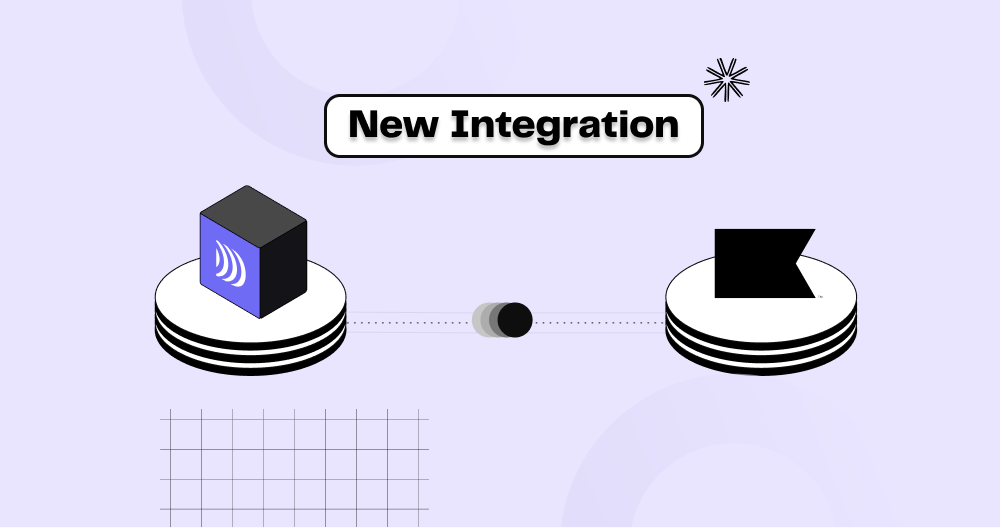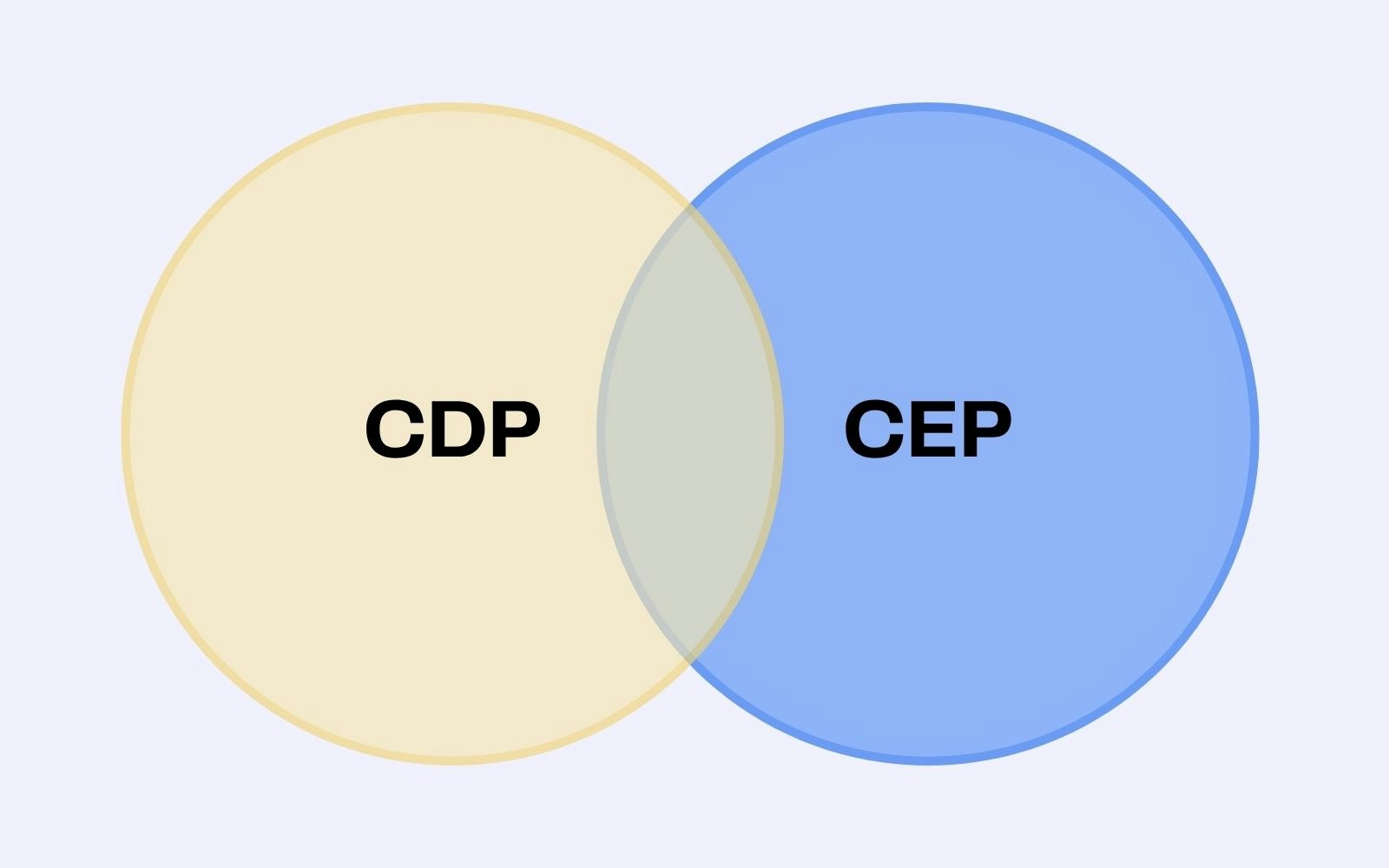
CDP and CEP: What is the difference and how should you choose?
7min • Last updated on Sep 23, 2025

Olivier Renard
Content & SEO Manager
The global cloud data warehouse (CDW) market is growing rapidly. It is expected to reach £8.5 billion this year, with an average annual growth rate of 26% (The Business Research Company).
For most B2C companies, the data warehouse has become the core of their marketing infrastructure. 92% report storing their customer data there, or plan to do so (The State of Martech 2025).
In this cloud-dominated landscape, the need for activation and personalisation across the customer journey remains critical. Two types of platforms aim to meet these needs: CDPs (Customer Data Platforms) and CEPs (Customer Engagement Platforms).
Key takeaways:
CDPs and CEPs serve different purposes. The former focuses on collecting, unifying and activating customer data. The latter orchestrates marketing interactions across channels.
Some Customer Engagement Platforms include CDP features without offering the full capabilities of a true Customer Data Platform and vice versa.
The composable approach is a major advantage, as it allows both platforms to work together. A modular CDP enhances a CEP’s capabilities by drawing on the data warehouse.
Beyond budget, the right choice depends on your data architecture, use cases, and the level of autonomy expected by business teams.
👉 CDP or CEP: what are the differences and how do you choose the right one? Explore how these two platforms complement rather than compete with each other. 🎯
What is a CDP (Customer Data Platform)?
A CDP is software designed to collect, unify, and activate customer data. It brings together information from multiple sources (website, app, CRM, stores, etc.) and provides identity resolution.
The goal is to build a Single Customer View (Customer 360) so that business teams can better understand the customer journey and deliver personalised campaigns.
A major trend in the CDP market is the composable approach, which leverages the company’s data warehouse. The zero-copy architecture of composable CDPs ensures stronger governance, more flexibility for teams and better cost control.
What is a CEP (Customer Engagement Platform)?
The main goal of a CEP is to orchestrate marketing campaigns. It enables message delivery across various channels: email, push notifications, SMS, in-app, messaging tools, and more.
It leverages existing data to automate customer interactions. However, it does not manage upstream data collection or unification. Its segmentation and enrichment capabilities are less advanced than those of a CDP.
Popular platforms include Batch, Braze, and Klaviyo, often used to automate real-time campaigns.
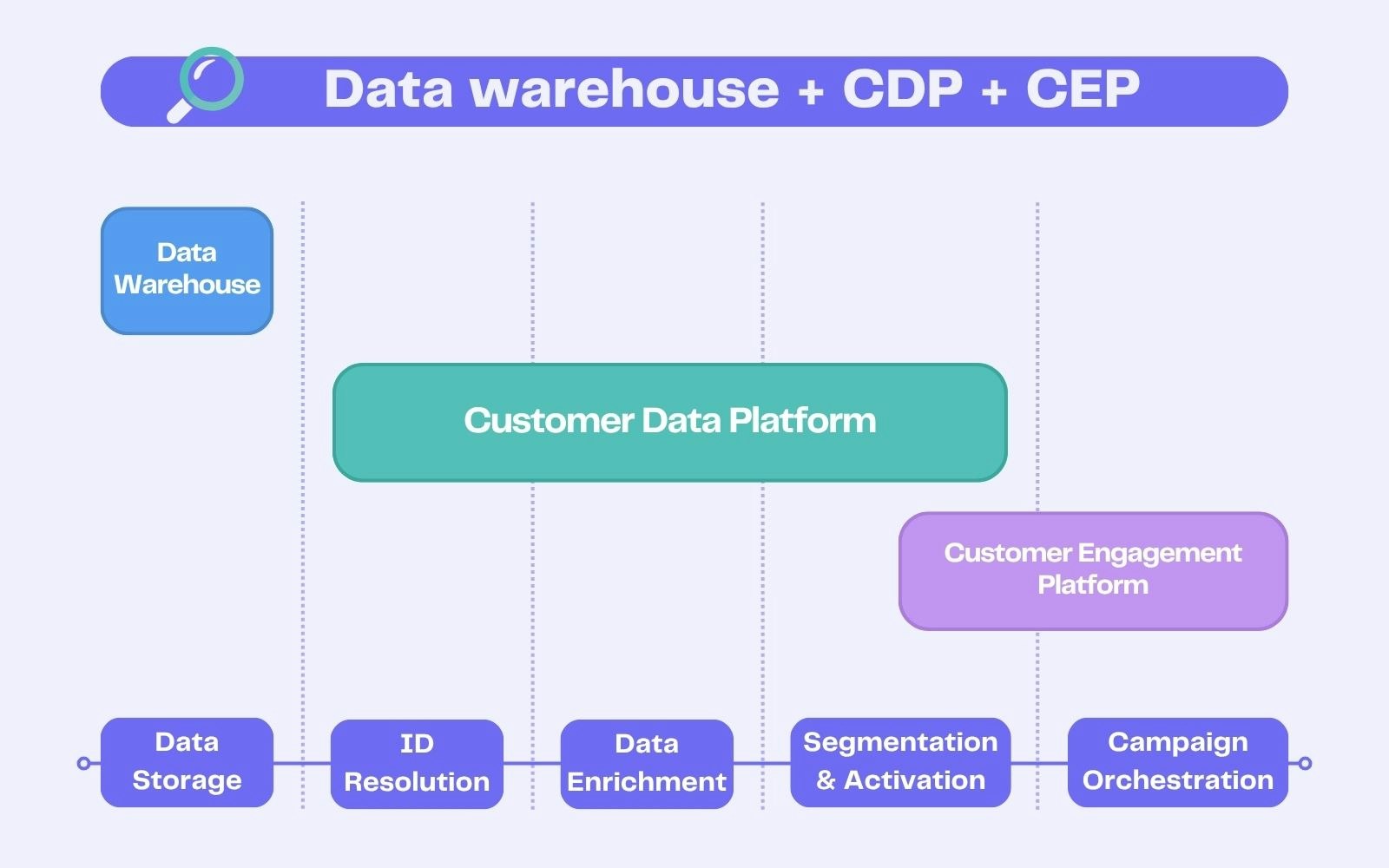
Other pieces of the ecosystem
Before CDPs and CEPs emerged, other tools shaped customer relationship management:
CRMs (Customer Relationship Management):
CRMs date back to the 1980s and remain the historical cornerstone. They manage information related to identified customers and prospects: contacts, purchases, and interactions.
However, compared to a CDP, CRMs generally lack the ability to handle behavioural or anonymous data.
DMPs (Data Management Platforms):
DMPs were widely used in the 2010s during the rise of anonymous audiences. They collected third-party data for ad targeting. But with the decline of third-party cookies, their usage has plummeted.
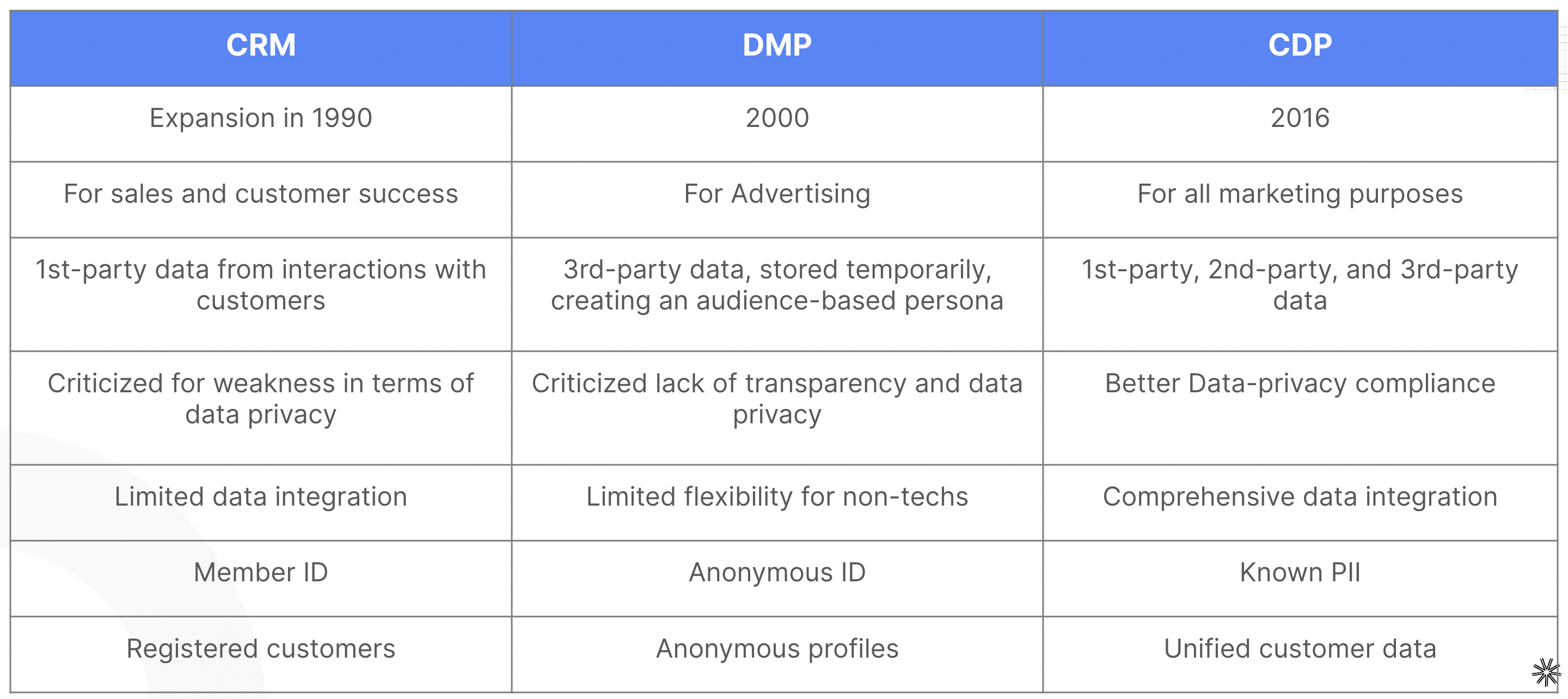
CRM vs CDP vs DMP
MarTech suites:
Solutions like Salesforce Data Cloud or Adobe Experience Platform combine multiple components (CRM, CEP, CDP, analytics, etc.) into all-in-one packages. However, they are often complex to deploy and less open to modern data ecosystems.
Some Customer Engagement Platforms now include “CDP bricks”. However, they rarely match the capabilities of a full-fledged Customer Data Platform.
CDP vs CEP: What are the differences?
CDPs and CEPs offer features and pursue goals that may appear similar, to the point of sometimes being confused. However, they do not cover the same use cases and are not intended for the same teams.
Criteria | CDP (Customer Data Platform) | CEP (Customer Engagement Platform) |
|---|---|---|
Main goal | Centralise, unify, and activate customer data from multiple sources. | Orchestrate marketing campaigns and optimise interactions across channels. |
Typical use cases | Customer 360, advanced segmentation, scoring, LTV measurement, omnichannel personalisation. | Email campaigns, push/in-app, marketing automation, re-engagement scenarios. |
Target audience | Marketing, data, sales, IT, support, product teams. | Marketing, CRM (loyalty, customer care) teams. |
Key features | Multi-source collection, modelling, ID resolution, analysis, segmentation, orchestration, activation (Reverse ETL). | Campaign design, automation, A/B testing, behavioural triggers, engagement scoring. |
Architecture types | Packaged, composable (data warehouse-native, zero-copy), hybrid. | Standalone, CDP-connected, suite-integrated. |
Examples of vendors | DinMo, Hightouch, Segment, Tealium, Simon Data, Adobe Real-Time CDP. | Batch, Braze, Brevo, Klaviyo, Salesforce Marketing Cloud Engagement, Iterable, Actito, Selligent. |
CDP vs CEP
Some Customer Engagement Platforms now go beyond basic campaign orchestration. An appealing promise on paper, but one that deserves closer examination.
We have written a white paper to help you better understand the differences between CDPs and CEPs.
Click here to get it! 👇
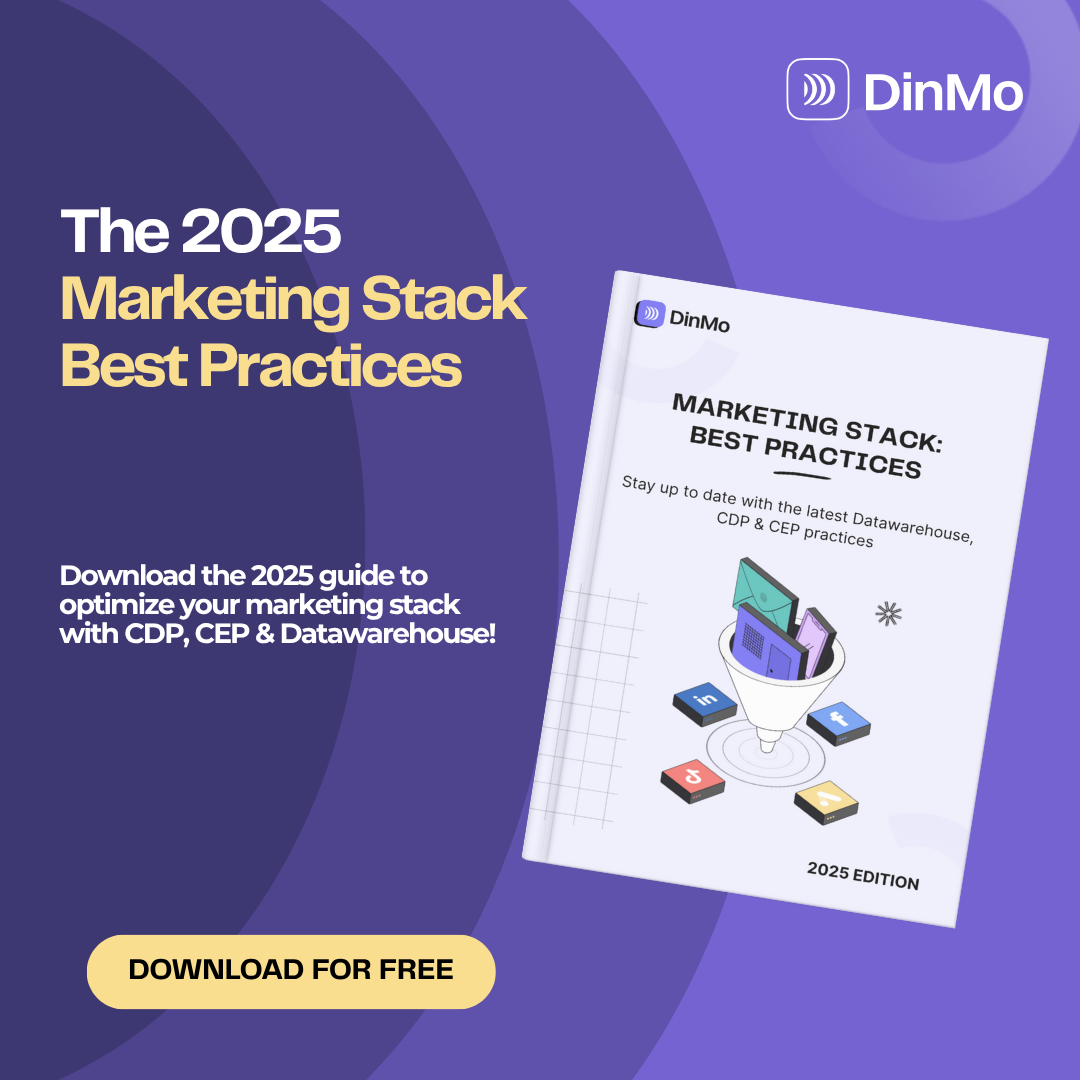
Get the white paper on CEPs and CDPs
What about CEPs with CDP functionalities?
Customer engagement platforms today offer features that appear to overlap with those of CDPs. Some can connect to a data warehouse, create audience segments, manage personalised journeys, and support omnichannel activation.
Doing all of this from a single interface seems attractive. But this approach has clear limitations:
Data usually needs to be copied into the CEP’s infrastructure, making governance harder and creating discrepancies with the source of truth.
Profile management remains limited, with no real multi-source unification or true Customer 360 capabilities.
Poor interoperability with some activation channels like ad platforms.
Rigid architecture, difficult to adapt without added costs.
A solution that may be practical in the short term, but too limited for a robust, data-driven strategy. Depending on your data maturity and marketing goals, investing in the combination of data warehouse + CDP + CEP proves to be far more effective.
Competing or complementary platforms?
Composable CDP + CEP: a powerful combination
So, do you have to choose between a Customer Data Platform (CDP) and a Customer Engagement Platform (CEP)? Not necessarily.
A composable CDP builds on customer data centralised in the data warehouse. It models and enriches this data to create a true Customer 360° view. This zero-copy architecture ensures clear governance and makes it easier to build segments that can be activated across all channels.
A CEP focuses on optimising interactions. It orchestrates campaigns, automates journeys, and delivers the right messages through the right channels (email, SMS, push notifications, etc.).
Together, they form a high-performing duo:
- The CDP feeds the CEP with reliable, activation-ready data.
- The CEP executes the scenarios with agility and precision.
This modular approach fosters an interoperable ecosystem that is far more flexible and efficient than a monolithic stack.
The example of our client Kappa
Kappa is an iconic sportswear and lifestyle brand founded in 1967. The Italian label is loved for its colourful style and the quality of its products. It is one of the leading suppliers for major sports clubs.
The challenge: empowering the marketing teams to activate customer data in Klaviyo (for email and SMS), and on advertising channels (Meta and Google Ads) while keeping costs low and maintaining a flexible stack.
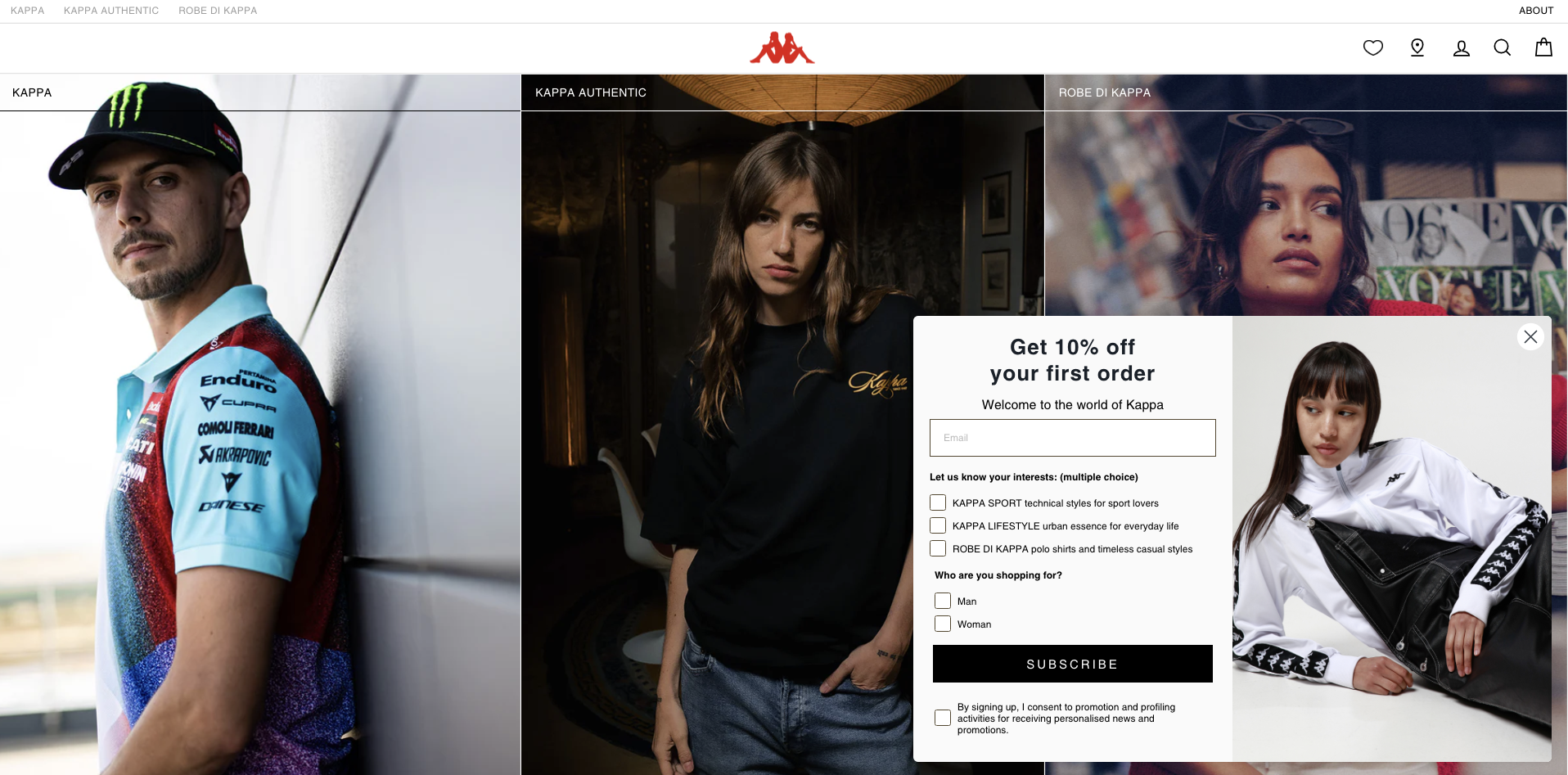
Kappa online shop (credit: Kappa)
💡 With DinMo, the brand was able to migrate all its segments and activations within just a few days, with no loss of continuity.
Data is now synchronised automatically from their data warehouse.
Klaviyo receives up-to-date segments, enriched by our AI and ready to use.
Campaigns are more targeted, audiences consistent across channels, and teams have become more responsive.
Who is this approach best suited for?
The combination of CDW + composable CDP + CEP is designed for any business looking to regain control over its data and marketing activations. In particular:
Companies that already have a data warehouse (or plan to implement one).
Marketing teams who want to build, test, and activate segments without technical knowledge.
Data teams looking to save time on repetitive tasks such as SQL queries.
Organisations aiming for strong data governance and large-scale omnichannel activation.
This modular architecture appeals to all data-driven organisations. It enables alignment between marketing performance, operational agility, and data control.
How to choose?
There is no one-size-fits-all solution. The right choice will always depend on your specific context and goals. Here are four essential criteria to help guide your decision:
Data architecture
A composable CDP integrates naturally into your modern data stack. It manages, unifies, and segments your data at the source: the data warehouse. The CEP, meanwhile, addresses your activation needs based on insights derived from the CDP.
Priority use cases
Is your primary objective to personalise customer journeys, activate audiences across advertising platforms, or orchestrate omnichannel scenarios?
Expected level of autonomy
In a win-win approach, marketing teams need to move quickly without relying on technical support. This independence benefits data and IT teams, who are then less frequently called upon.
Budget and scalability
Some solutions may seem more affordable in the short term but come with limitations in governance, interoperability, or scalability. Investing in a robust and flexible data foundation ensures better long-term scalability and cost control.
Conclusion
Data warehouse, CDP, and CEP work together to meet the demands of data-driven marketing. By adopting a modern data architecture, businesses gain performance, agility, and autonomy.
DinMo supports you in choosing the right solutions that integrate with your existing ecosystem and scale with your needs. Feel free to contact us to set up a trial of our composable CDP.
FAQ
Can a CDP completely replace a CRM or a CEP?
Can a CDP completely replace a CRM or a CEP?
No. A CDP centralises, unifies, and structures customer data to make it actionable. However, it does not manage campaigns or direct commercial relationships.
It complements CRMs and CEPs by providing them with reliable and up-to-date data, without replacing their specific functions.
What are the risks of storing customer data across multiple tools?
What are the risks of storing customer data across multiple tools?
Storing data in multiple locations creates silos, complicates governance, and increases the risk of inconsistencies or outdated data.
This harms the quality of analysis and reduces the effectiveness of campaigns.
Centralising data in a data warehouse, supported by a CDP, ensures a consistent and actionable view.
How long does it take to set up a CDP and integrate it with a CEP?
How long does it take to set up a CDP and integrate it with a CEP?
It all depends on the existing data infrastructure and the type of CDP selected. A composable CDP, connected to a data warehouse, can be up and running within a few hours.
Thanks to Reverse ETL connectors, integration with a CEP such as Klaviyo, Batch or Braze is fast. Initial use cases can be launched the same day.

















